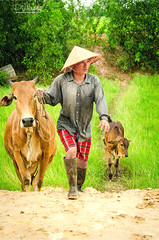Sunday, March 25, 2012
Within 24-hours of posting a web advertisement for an upcoming hackathon in Boston, Massachusetts, web startup Sqoot has lost four sponsors for the event, in what has been described as the “worst startup PR crisis in recent history.” This caused them to postpone the event and apologize in response to thousands of tweets that opposed the advert and found its content sexist.
On March 20, Sqoot, an API provider that delivers daily deals like Groupon and Gilt City, posted an online advert for their upcoming Boston API Jam. The advert promoted various perks for the event, including an in-house DJ, cocktails, food trucks and access to women: women specifically there to serve beer to attendees. As soon as the ad was posted to Eventbrite, many on Twitter expressed concern. Over 3,000 tweets later, the advert was deemed sexist by many and Twitter users both condemned Sqoot and contacted the sponsors of the event. The ad, which Alex Williams of SiliconANGLE described as “bizarre” and “misogynist,” was quietly changed on Eventbrite by Sqoot, removing the mention of women as beer peddlers.
In a matter of hours, four sponsors had pulled out from the Boston event: CloudMine, Apigee, Heroku, and MongoHQ. Shortly thereafter, Sqoot offered two apologies: a brief apology which was then followed by a more detailed apology stating that they desired to have a “good party” that was not a standard hackathon experience of pizza and keynote speakers. Sqoot stated that they “aimed to call attention to the male-dominated tech world through humor and intended to be inclusive, the gravity of our wording was just the opposite. Our words completely undermined our intentions and went further to harm the world we’re trying to have a positive impact on.” Other sponsors such as Constant Contact and Simple Relevance remained as sponsors.
Shanley Kane, director of product management at Basho Technologies, supported the sponsor withdrawal and didn’t just consider the advertisement sexist, but also homophobic by ostracizing gay men by promoting a seemingly “straight” agenda for the event. Kane also believed that Sqoot had the “false assumption that women would not attend the event at all,” by promoting it with a male targeted spin. In an industry that is dominated by men, it can be assumed that more men would attend the hackathon than women, but, the advertisement ostracized women even more from attending. And this wasn’t Sqoot’s first foray into straight male targeted marketing. Blog posts like “Sqoot Makes You Yelp!” featuring the Yelp logo on a woman’s backside and “Sqoot Goes Topless” featuring an image of a topless woman, are meant to promote the opening of Yelp’s API and company transparency.
Alex Williams believes that the Sqoot situation shows that sexism within the tech industry is broad and growing. “Women are marginalized and treated more as objects than as colleagues. The trend is a disturbing one and poses a serious threat to the health and diversity of the tech sector.” Techli’s Kathryn Hough chocked it up to immaturity, “Someone needs to tell young founders that frat house behavior is not acceptable in the business world. If Sqoot’s business collapses for a few sentences of sexist copy, I hope that other young founders get to see the wreckage before following them off the plank.”
Lukas Blakk, a release engineer and advisory board member for The Ada Initiative, a non-profit that tries to increase female participation in technology and open source, believes that having a code of conduct in place is a necessity for businesses, and for those businesses who don’t “you’ve got a ticking time bomb in your organization’s future.” Social media is giving businesses a new challenge when it comes to marketing. When it comes to the criticism fielded by the public towards businesses regarding sexist content, fellow Ada Initiative board member and database analyst Selena Deckelmann agrees that businesses need to step up to the challenge and respond appropriately. “…companies need to develop the skills necessary to respond with grace and understanding, even when under intense, negative scrutiny. Silencing, gas-lighting and ignoring the messenger tactics no longer work when a social network quickly spreads information, and occasionally, outrage.”
Is there a future for Sqoot? Mike Maney believes Sqoot can recover. Maney, head of influencer management for Alcatel-Lucent, acknowledges that Sqoot will have a long way to go to regain their credibility amongst the tech industry and the clientele they serve, “But, the work they’ll have to do to undo the self-inflicted damage […] is going to require a massive effort.”


